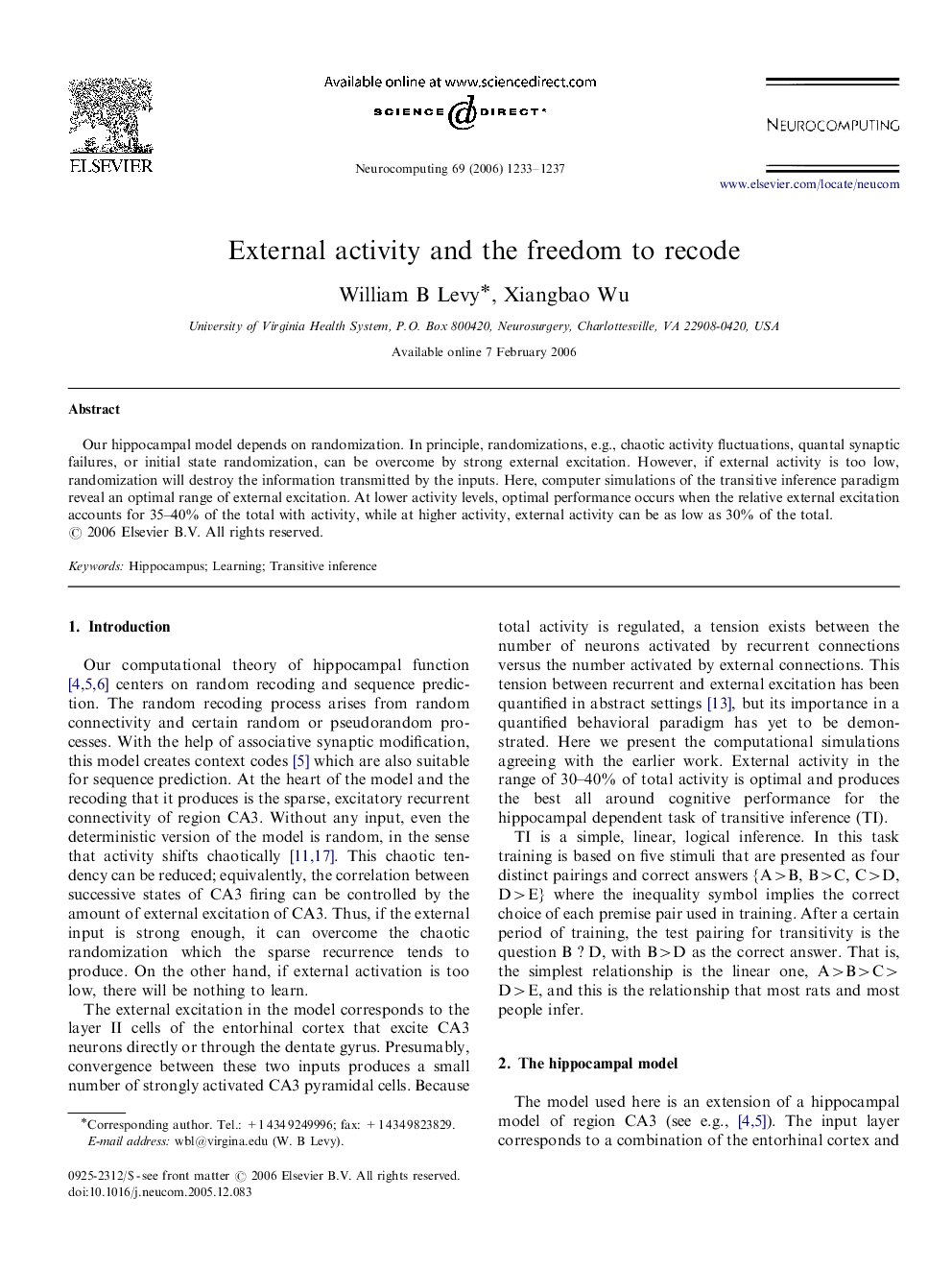| Article ID | Journal | Published Year | Pages | File Type |
|---|---|---|---|---|
| 408748 | Neurocomputing | 2006 | 5 Pages |
Abstract
Our hippocampal model depends on randomization. In principle, randomizations, e.g., chaotic activity fluctuations, quantal synaptic failures, or initial state randomization, can be overcome by strong external excitation. However, if external activity is too low, randomization will destroy the information transmitted by the inputs. Here, computer simulations of the transitive inference paradigm reveal an optimal range of external excitation. At lower activity levels, optimal performance occurs when the relative external excitation accounts for 35–40% of the total with activity, while at higher activity, external activity can be as low as 30% of the total.
Related Topics
Physical Sciences and Engineering
Computer Science
Artificial Intelligence
Authors
William B Levy, Xiangbao Wu,
